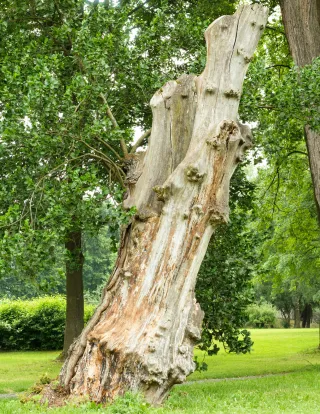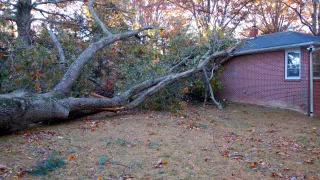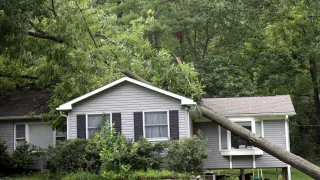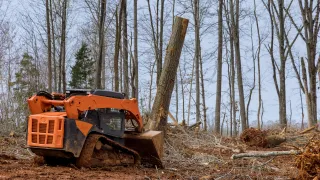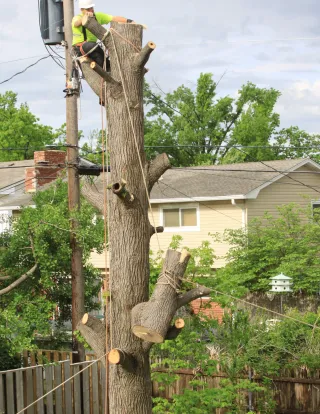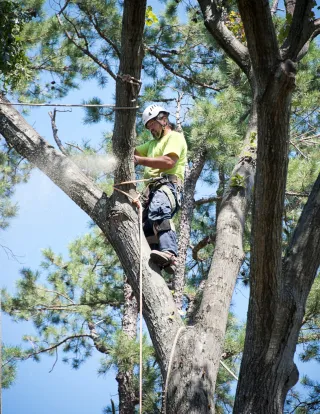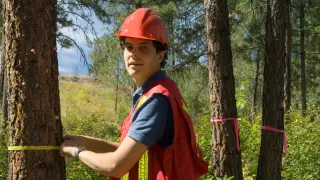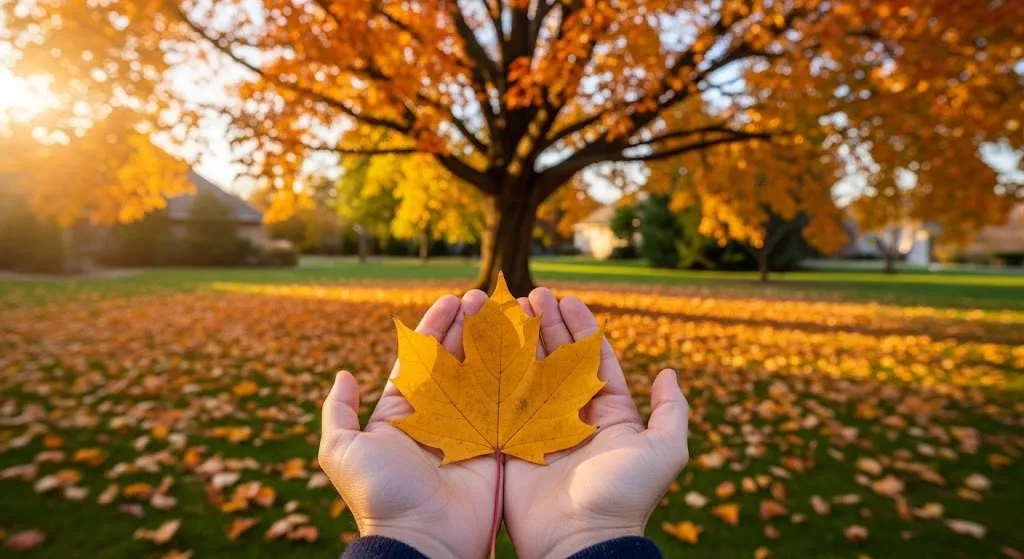
Leaf Drop Anxiety: When Falling Leaves Mean Something's Wrong
October brings out tree anxiety in homeowners like no other time of year. Normal leaf drop looks scary when you're not sure what's normal, and I get more worried calls in October than any other month. Most of the time, what people are seeing is completely natural – but sometimes leaf drop really does signal problems that need attention.
The key is learning to distinguish between normal autumn behavior and signs of distress. Trees have been dropping leaves for millions of years without human intervention, but they also communicate through their leaf drop patterns when something's wrong.
What Normal Leaf Drop Looks Like
Gradual color change followed by leaf drop over several weeks is typical for most deciduous trees. The timing varies by species, but the pattern is usually consistent.
Maple trees typically turn vibrant colors before dropping leaves relatively quickly once cold weather hits.
Oak trees often turn brown and may hold onto leaves well into winter – this is normal for oaks, not a sign of problems.
Hickories and walnuts often drop leaves while they're still green or after minimal color change – again, this is normal species behavior.
The key is consistency within species. If your red maple is doing something very different from other red maples in the neighborhood, that's worth investigating.
Concerning Leaf Drop Patterns
Early leaf drop before other trees of the same species start changing can indicate stress – drought, disease, insect damage, or root problems.
Sudden leaf drop where a tree loses most of its leaves within a few days, especially if they don't change color first, often signals serious stress.
Partial leaf drop where some branches drop leaves while others don't can indicate localized problems – disease, physical damage, or issues with specific branches.
Late leaf retention where trees keep green leaves well past when they should have dropped them might indicate problems with dormancy preparation.
Stress-Related Leaf Drop
Drought stress often shows up as early leaf drop, sometimes in late summer or early fall. Leaves may turn brown around the edges before dropping, or they might just drop while still green.
Root problems from construction damage, soil compaction, or disease can cause erratic leaf drop patterns. Some branches might drop leaves early while others seem normal.
Insect damage accumulated over the growing season sometimes results in early or unusual leaf drop as trees try to conserve energy.
Disease issues like anthracnose, leaf spot, or wilt diseases can cause early leaf drop, though the leaves often show obvious signs of disease before dropping.
Environmental Factors
Weather patterns affect leaf drop timing significantly. Early cold snaps can trigger sudden leaf drop before trees have a chance to go through normal color changes.
Drought followed by heavy rain can cause trees to drop leaves suddenly as they respond to rapidly changing soil conditions.
Wind storms can strip leaves from trees prematurely, but this usually affects all trees in an area similarly.
Soil conditions – construction damage, chemical spills, or changes in drainage – can cause individual trees to behave differently from their neighbors.
Species-Specific Behaviors
Tulip trees (yellow poplars) often drop leaves early and suddenly, sometimes while they're still green. This can look alarming but is often normal for this species.
Sweet gums typically have spectacular fall color but may drop leaves quickly once temperatures drop consistently.
Bradford pears often hold leaves late into fall, and early leaf drop from these trees can indicate the structural problems this species is prone to.
Evergreens drop needles too, usually older interior needles. This happens gradually and can be more noticeable in fall.
Age and Health Factors
Young, recently planted trees often have erratic leaf drop patterns for the first few years as they establish. This is usually normal unless accompanied by other signs of distress.
Mature, healthy trees should have predictable leaf drop patterns. Significant changes from previous years' behavior are worth investigating.
Trees already dealing with stress – from construction, disease, or environmental factors – are more likely to have unusual leaf drop patterns.
Old trees in decline sometimes show erratic leaf behavior as different parts of the tree respond to stress differently.
What to Look For Besides Timing
Leaf condition before dropping tells you a lot. Healthy autumn leaves change color before dropping. Leaves that drop while green or that turn brown suddenly often indicate problems.
Branch patterns – if leaf drop is happening mainly on one side of a tree or specific branches, that suggests localized problems rather than normal seasonal behavior.
Overall tree health – are there other signs of problems like dead branches, bark issues, or unusual growth patterns?
Soil conditions around the tree – is the soil compacted, soggy, or obviously disturbed?
When to Be Concerned
Sudden, massive leaf drop especially if leaves don't change color first, warrants investigation.
Early leaf drop combined with other symptoms like dead branches, bark problems, or signs of pest damage.
Unusual patterns compared to previous years or compared to other trees of the same species in similar conditions.
Leaf drop accompanied by wilting during times when adequate soil moisture is available.
What You Can Do
Document what you're seeing with photos and notes about timing. This helps if you need professional assessment later.
Check soil conditions around the tree – is it too wet, too dry, or obviously disturbed?
Look for other signs of problems like insects, disease symptoms, or physical damage.
Be patient – sometimes what looks like a crisis in October resolves itself as trees complete their normal dormancy process.
When to Call for Help
If leaf drop is accompanied by obvious signs of disease or pest problems, professional diagnosis can help determine if treatment is needed.
If multiple trees are affected, there might be environmental factors that need to be addressed.
If leaf drop patterns are very different from previous years and you can't identify obvious causes, professional assessment can provide peace of mind.
If trees are near structures or safety concerns and showing signs of distress, it's worth getting professional evaluation.
Prevention and Tree Health
Consistent watering during dry periods helps trees avoid the stress that leads to abnormal leaf drop.
Proper mulching maintains consistent soil conditions that support normal tree function.
Avoiding soil compaction and root damage helps trees maintain the root health necessary for normal seasonal behavior.
Regular monitoring of tree health throughout the growing season helps you notice problems before they become serious.
The Long-Term Perspective
One unusual year doesn't necessarily mean your tree is dying. Trees can recover from stress and return to normal patterns.
Patterns over multiple years are more significant than single-year anomalies.
Overall tree health matters more than perfect leaf drop timing. A tree that's generally healthy can handle some environmental stress.
Professional assessment becomes more important when problems persist across multiple seasons.
Managing October Anxiety
Remember that trees are tough. They've evolved to handle environmental variability, and many apparent problems resolve themselves.
Focus on things you can control – adequate watering, avoiding root damage, proper mulching – rather than worrying about things you can't.
Learn your trees' normal patterns so you can distinguish between species behavior and actual problems.
When in doubt, document and wait – many October concerns look different in November or the following spring.
The Bottom Line
Most October leaf drop anxiety is misplaced – trees dropping leaves in fall is exactly what they're supposed to do, even when the timing or pattern seems unusual.
But sometimes leaf drop patterns do indicate real problems that benefit from attention. The key is learning to distinguish between normal variation and genuine cause for concern.
When patterns are significantly different from what you've seen before, or when leaf drop is accompanied by other symptoms, professional assessment can help you determine whether intervention is needed or whether you're dealing with normal tree behavior that just looks concerning.
If you're seeing leaf drop patterns that worry you, or if you want help distinguishing between normal fall behavior and signs of problems, give us a call or text at (423) 443-4533. Sometimes a quick conversation can provide a lot of peace of mind – and help you know when concern is actually warranted.


